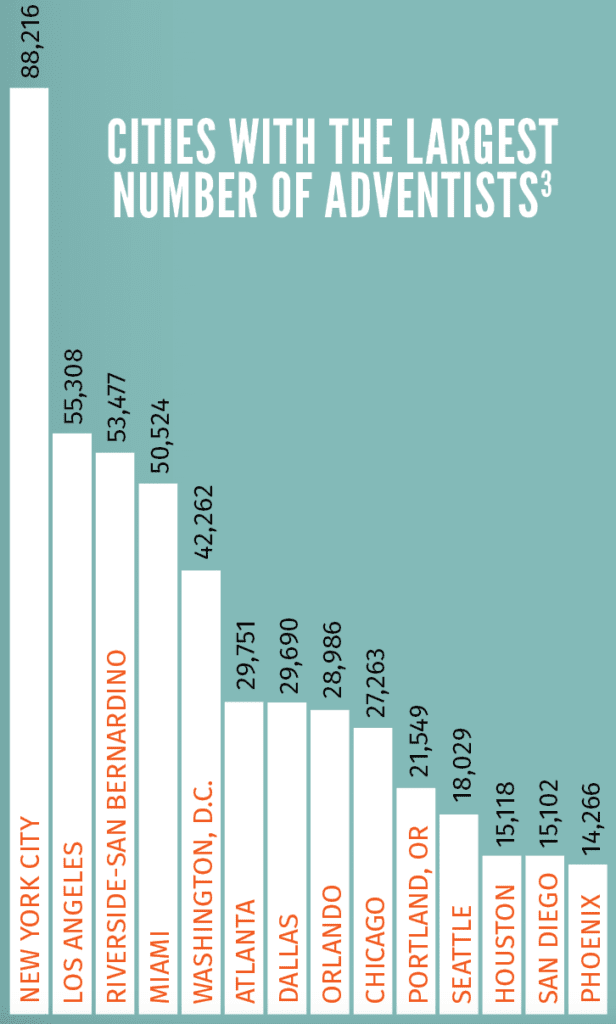In 1990, 80.2 percent of Seventh-day Adventists lived in metropolitan areas, and 19.8 percent in small towns and rural areas. This is roughly the same percentages as the total population of the country, where 52.5 percent lived in metro areas of 1 million or more, while 27.6 percent lived in metro areas of less than 1 million population.1
Twenty years later, in 2010, 87.7 percent of Adventists lived in metropolitan areas, and only 12.3 percent lived in small towns and rural areas. This is a somewhat higher percentage than the total population of the country, where 58.3 percent lived in metro areas of 1 million or more, and 29.4 percent lived in metro areas of less than 1 million population.2
The numbers include children in Adventist families, not just adult or baptized members.
Metropolitan areas include both a central city and its suburbs. The central city must have a population of at least 50,000.


Monte Sahlin, an ordained Seventh-day Adventist minister, served at all levels of the denomination for more than 44 years. He is the author of Mission in Metropolis: The Adventist Movement in an Urban World (Center for Creative Ministry, 2007). He consults for the Institute of Church Ministry at Andrews University and the Center for Creative Ministry.